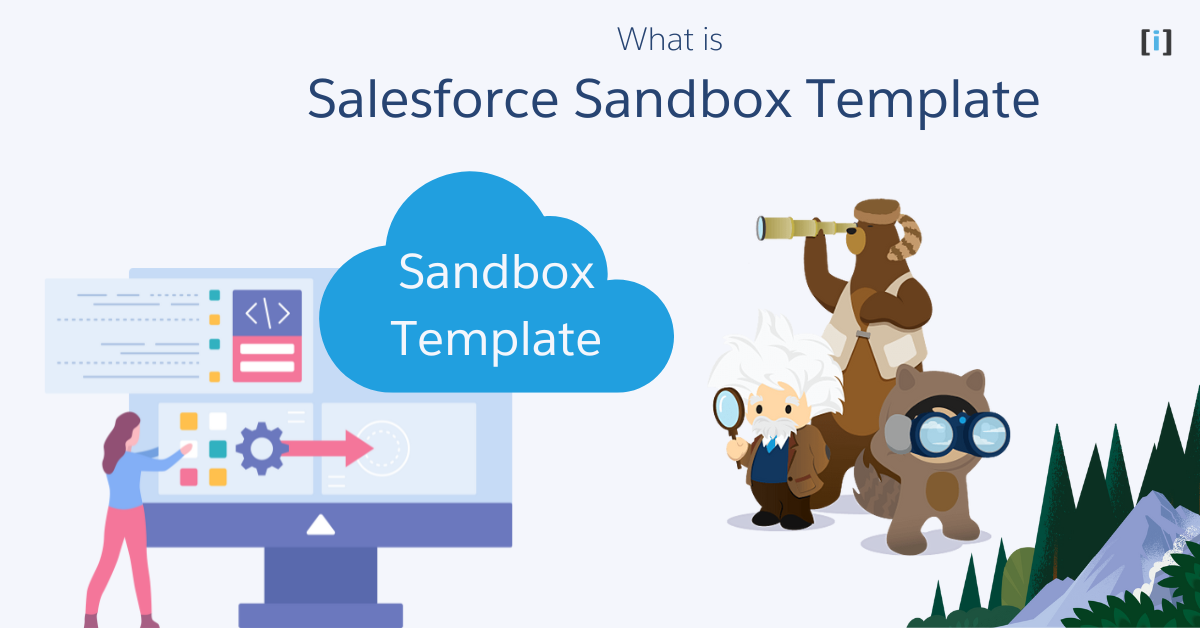One important tool that helps to simplify the process of creating sandboxes is the Salesforce Sandbox Template. This template lets you choose the exact configurations, data, and settings that you want to include when creating a sandbox. A well-designed template makes sure your sandbox is set up quickly and the same way each time.
In this guide, we will explain what a Salesforce Sandbox Template is and how to create and manage one, so you can make the most out of your Salesforce sandboxes.
If you’re not familiar with Salesforce Sandboxes,Check out this article to learn everything you need to know about them.
What is a Salesforce Sandbox Template?

A Sandbox Template is a predefined configuration that controls what data, settings, and customizations are copied into a sandbox when it’s created or refreshed.
Sandboxes are used for tasks like testing new features, building custom applications, or training users, and the template helps define exactly what should be included in this environment.
A sandbox template enables you to choose specific objects and data to copy into your sandbox.
Key Features of a Salesforce Sandbox Template
Here are several key components that a Sandbox Template can control:
Data
You can decide whether to include specific data like accounts, contacts, leads, and custom objects. This helps you replicate realistic scenarios for testing without using live production data.
Learn more about Salesforce objects by checking this out.
Settings
This includes user profiles, page layouts, workflow rules, and other configuration settings that define how your Salesforce organization behaves. You can specify exactly which settings you want in your sandbox environment.
Metadata
This refers to the structure of your Salesforce environment, such as custom fields, triggers, Visualforce pages, Apex classes, and other code elements. A template can help ensure your sandbox includes the necessary metadata for development or testing purposes.
Find out more about triggers in Salesforce.
What You Need to Create a Salesforce Sandbox Template?
Before you create a sandbox template, make sure you have the following:
User Permissions
You need the appropriate administrative permissions to create and manage sandbox templates.
Salesforce Setup
You should have a Salesforce organization that supports sandbox creation (like Developer, Developer Pro, Partial Copy, or Full Sandboxes).
Sandbox Plan
Know what type of sandbox you need—whether it’s a full copy of your production data or a smaller setup for development.
Note
- If you exclude an object, Salesforce will alert you that related objects will also be removed.
- Sandbox templates can only be used with Full or Partial Copy sandboxes. Developer and Developer Pro sandboxes contain all metadata but no record data.
- If the sandbox doesn’t support a template, then no records will be copied over when it’s created. In this case, you will need to create test data manually. You can do this by creating records in Salesforce, importing data, or using APEX.
How to create Sandbox Templates?
Here are the steps to guide you through creating a new Salesforce Sandbox Template.
Login to Salesforce Org

Login into your Salesforce production Org.
Navigate to Sandbox
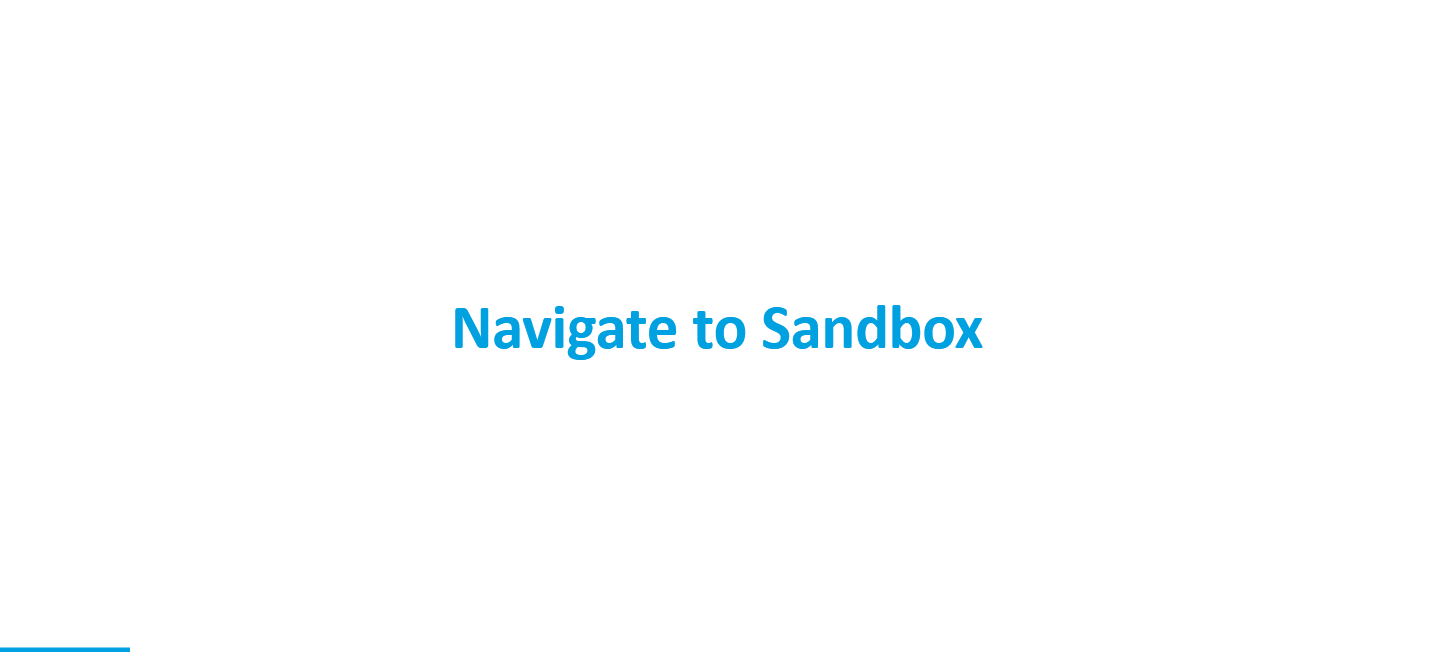
Click on the gear icon in the upper-right and select “Setup“.
In the Quick Find search box on the left, type “Sandboxes” and and select the Sandboxes option.
Create a New Sandbox Template
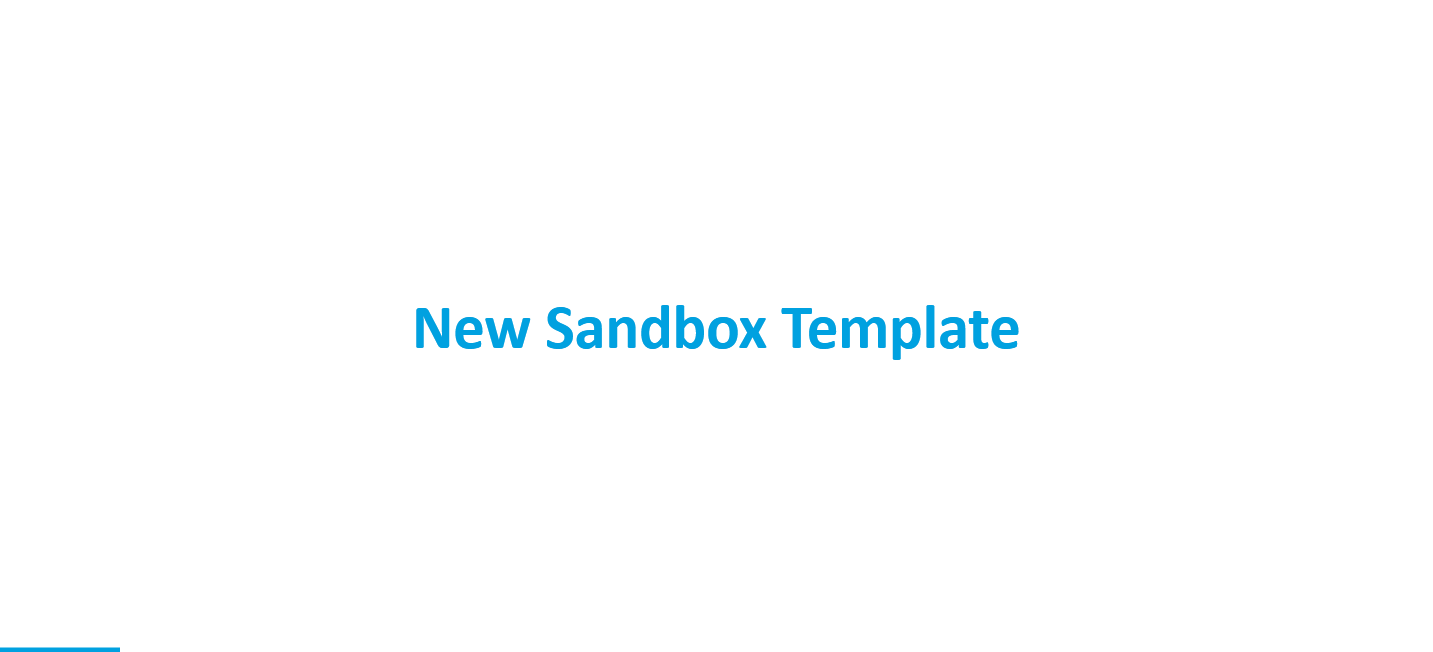
Click on the “Sandbox Templates” tab and select the “New Sandbox Template” button to begin creating.
Saving the Sandbox Template
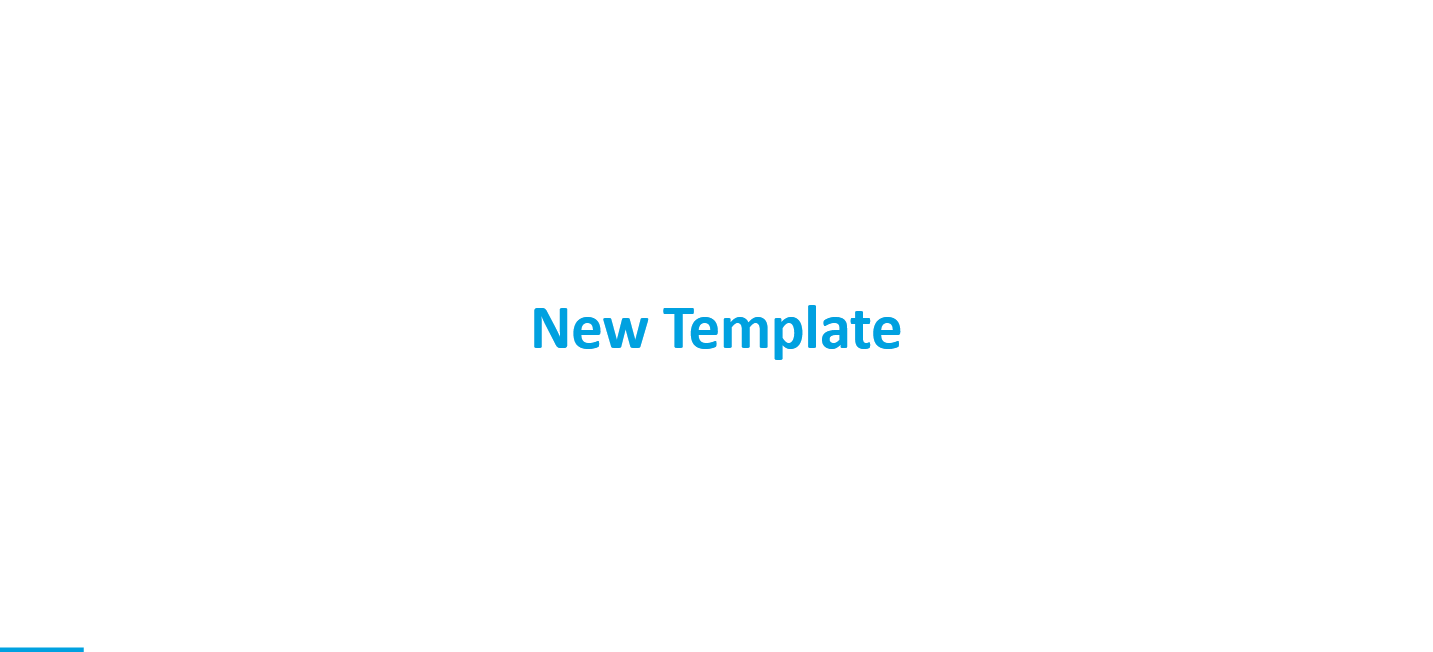
Enter a Template Name and a Description that describes the purpose of the template
Choose Components to Include.
After selecting all necessary components, click Save. This will create your new template
Managing and Modifying Salesforce Sandbox Templates
After creating a sandbox template, you may need to manage or make changes to it as your needs :
View Existing Templates
In the “Sandbox” section of Setup, you can see all the templates you’ve created. This lets you keep track of your templates and check their details.
Editing Templates
You can make updates to a template whenever needed. This includes adding new components, changing configurations, or adjusting settings to reflect changes in your Salesforce environment.
Deleting Templates
If a template is no longer needed, you can remove it from the list. Deleting unused templates helps keep your setup organized.
Best Practices
It’s a good idea to regularly review and update your templates to make sure they match any changes in your production environment. This ensures that your sandbox environments remain accurate and useful for testing or development.
Use Case of Salesforce Sandbox Templates
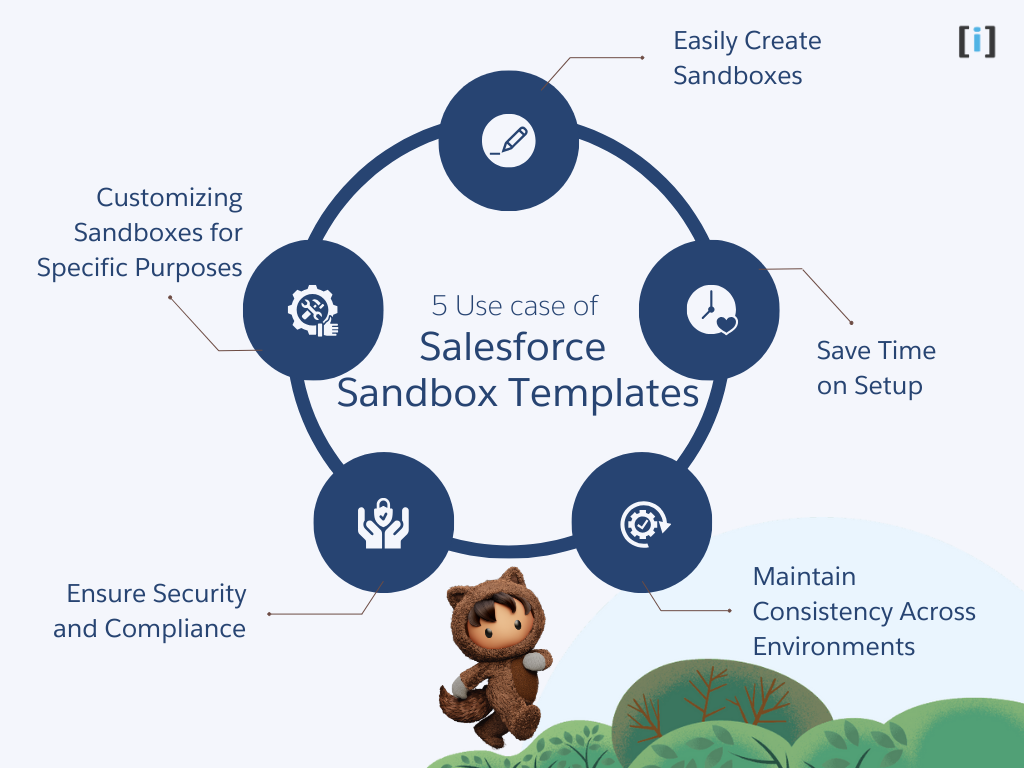
Easily Create Sandboxes
When a company needs to create multiple sandboxes for different tasks (like development or testing), templates help by automatically including only what’s needed. This saves time and keeps everything the same across sandboxes.
Customizing Sandboxes for Specific Purposes
Different sandboxes are used for different tasks, like development, testing, or training. A template allows the admin to specify which metadata (like objects, fields, Apex code, Visualforce pages, etc.) should be included, ensuring that the sandbox is fit its purpose.
Check out the Salesforce guide on how to create a sandbox template without any object data.
Maintain Consistency Across Environments
For large companies with many teams, it’s important to keep all sandboxes the same. Templates help ensure the settings and configurations are identical in every sandbox.
Save Time on Setup
Setting up each sandbox can take a lot of time, especially if they need similar configurations. Templates speed up this process by reusing previous setups.
Ensure Security and Compliance
For companies in regulated industries, it’s important to keep sensitive data safe. Templates help by ensuring that only the right data is copied to a sandbox, and sensitive data is protected.
Conclusion
Salesforce Sandbox Templates are a powerful tool for organizations that need to manage multiple sandboxes for different purposes like development, testing, or training. They help users to set up sandboxes automatically and customize them easily. This saves time, keeps things consistent, and ensures security and compliance.
FAQ
How often should I update my sandbox templates?
Regular Review: Review and update templates at least once a quarter.
New Features: Update templates whenever new features or functionalities are added.
Bug Fixes: Immediately update templates to address any discovered bugs or vulnerabilities.
Industry Standards: Stay up-to-date with industry standards and best practices, making updates as needed.
Documentation: Regularly check and update documentation associated with the templates.
What is a Salesforce Sandbox Template?
A Salesforce Sandbox Template is a predefined configuration that helps create sandboxes with specific settings, data, and metadata.
Which types of sandboxes can use Sandbox Templates?
Sandbox templates can only be used with Full or Partial Copy sandboxes.
What do Developer and Developer Pro sandboxes contain?
Developer and Developer Pro sandboxes contain all metadata but no record data.
What happens if a sandbox doesn’t support a template?
If the sandbox doesn’t support a template, no records will be copied over when it’s created.
How can you create test data if no records are copied over?
If no records are copied over, you will need to create test data manually by creating records in Salesforce, importing data, or using APEX.
Can I use Sandbox Templates for different teams within my organization?
Absolutely! Sandbox Templates can be customized for different teams, ensuring each team gets a sandbox with the specific data and settings they need for their tasks.
Can I update an existing Sandbox Template?
Yes, you can update a sandbox template to reflect changes in your environment.
